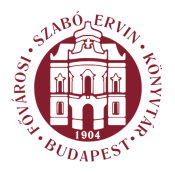Prakfalvi Endre: Roman Catholic Churches in Unified Budapest - Our Budapest (Budapest, 2003)
The Parish Church of St. Imre, 1938
is a free-standing building with a Latin-cross groundplan. It creates an effect of centrality with its nave consisting of two shorter vault segments. The chancel has a semi-circular closure with the sacristy and a storage room (depoiitorium) on its sides and upper oratories on both sides connected by an ambulatory to the rear of the apse. The walls are made of brick with a facing of sandstone ashlar. The ceiling and the vaults are made of reinforced concrete. Opened up by arcades and featuring a rosette, the main front serves as a porch for the portal. The, tall, cubic campanile on the right turns into an octagonal prism; the conic bell in its spire was cast in the workshop of László Szlezák. St. Michael's bell, which is attuned to the sound B, weighs 345 kilograms. "I call on the dead and I call on the quick, 1 make the storms flee and I make the winds quit,” as the old liturgical line says about the bell’s significance. The altars and the furnishings were designed by Fábián, while the stained-glass windows and the mosaics are the work of József Palka and Imre Zsellér. On 17 October 1936, the eve of the consecration, Prince Primate Jusztinján Serédi, who would consecrate the church, placed a relic of the martyrs SS Martialis and Felicissima in the main altar. The statue of the titular saint above the main entrance is the work of Jenő Bory. The presbytery (1937—38) next to the church was also designed by Fábián. It was to here that the painting entitled The Mourning oh Chriit by Árpád Feszty was brought from the church. In recognition of his achievements in ecclesiastical architecture, in 1926 Fábián was awarded the Knight’s Cross of St. Gregory Major by Pope Pius IX. Further works by Fábián, who described himself as "a Catholic church builder", include the neo-Romanesque church of the Sacred Cross built in 1929 on Ecseri út in outer Ferencváros and the neo-Gothic Holy Family Church in Szondy utca, District VI which was consecrated in 1930. The Parish Church of St. Imre, 1938 No, 25 Villányi út, District XI "Oh, how wonderful / It i& for a young one / To pan the gate / Of youthful age / In &acred iafety” (Hymn to Prince St. Imre, 13th century) This church stands near Móricz Zsigmond körtér (Circus), at the beginning of Villányi út in the neo-Baroque-historicist neighbourhood of its times. It was in the Circus formerly called Horthy Miklós that a monument to St. Imre, the patron of Hungary’s youth, sculpted by Zsigmond Kisfaludy Strobl, was unveiled in 60
